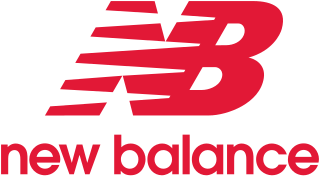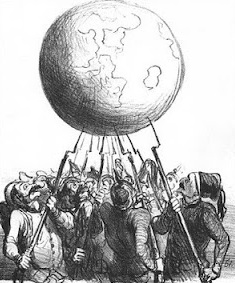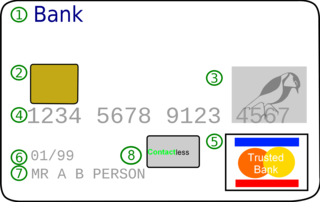
Bookkeeping is the recording of financial transactions, and is part of the process of accounting in business and other organisations. It involves preparing source documents for all transactions, operations, and other events of a business. Transactions include purchases, sales, receipts and payments by an individual person or an organization/corporation. There are several standard methods of bookkeeping, including the single-entry and double-entry bookkeeping systems. While these may be viewed as "real" bookkeeping, any process for recording financial transactions is a bookkeeping process.

The balance of trade, commercial balance, or net exports, is the difference between the monetary value of a nation's exports and imports over a certain time period. Sometimes a distinction is made between a balance of trade for goods versus one for services. The balance of trade measures a flow of exports and imports over a given period of time. The notion of the balance of trade does not mean that exports and imports are "in balance" with each other.

In computing, load balancing refers to the process of distributing a set of tasks over a set of resources, with the aim of making their overall processing more efficient. Load balancing techniques can optimize the response time for each task, avoiding unevenly overloading compute nodes while other compute nodes are left idle.

In finance, equity is ownership of assets that may have debts or other liabilities attached to them. Equity is measured for accounting purposes by subtracting liabilities from the value of the assets. For example, if someone owns a car worth $9,000 and owes $3,000 on the loan used to buy the car, then the difference of $6,000 is equity. Equity can apply to a single asset, such as a car or house, or to an entire business. A business that needs to start up or expand its operations can sell its equity in order to raise cash that does not have to be repaid on a set schedule.

In financial accounting, a balance sheet is a summary of the financial balances of an individual or organization, whether it be a sole proprietorship, a business partnership, a corporation, private limited company or other organization such as government or not-for-profit entity. Assets, liabilities and ownership equity are listed as of a specific date, such as the end of its financial year. A balance sheet is often described as a "snapshot of a company's financial condition". Of the four basic financial statements, the balance sheet is the only statement which applies to a single point in time of a business' calendar year.
Double-entry bookkeeping, in accounting, is a system of book keeping where every entry to an account requires a corresponding and opposite entry to a different account. The double-entry has two equal and corresponding sides known as debit and credit. The left-hand side is debit and right-hand side is credit. In a normally debited account, such as an asset account or an expense account, a debit increases the total quantity of money or financial value, and a credit decreases the amount or value. On the other hand, for an account that is normally credited, such as a liability account or a revenue account, it is credits that increase the account's value and debits that decrease it. In double-entry bookkeeping, a transaction always affects at least two accounts, always includes at least one debit and one credit, and always has total debits and total credits that are equal. This is to keep the accounting equation (below) in balance. For example, if a business takes out a bank loan for $10,000, recording the transaction would require a debit of $10,000 to an asset account called "Cash", as well as a credit of $10,000 to a liability account called "Notes Payable".

The Bofors 40 mm gun, often referred to simply as the Bofors gun, is an anti-aircraft autocannon designed in the 1930s by the Swedish arms manufacturer AB Bofors. It was one of the most popular medium-weight anti-aircraft systems during World War II, used by most of the western Allies as well as some captured systems being used by the Axis powers. A small number of these weapons remain in service to this day, and saw action as late as the Persian Gulf War.

A scale or balance is a device to measure weight or mass. These are also known as mass scales, weight scales, mass balances, weight balances.

The Oncidiinae is a subtribe within the Orchidaceae that consists of a number of genera that are closely related.

In photography and image processing, color balance is the global adjustment of the intensities of the colors. An important goal of this adjustment is to render specific colors – particularly neutral colors – correctly. Hence, the general method is sometimes called gray balance, neutral balance, or white balance. Color balance changes the overall mixture of colors in an image and is used for color correction. Generalized versions of color balance are used to correct colors other than neutrals or to deliberately change them for effect.

The BM-21 "Grad" is a Soviet truck-mounted 122 mm multiple rocket launcher. The weapons system and the M-21OF rocket were first developed in the early 1960s, and saw their first combat use in March 1969 during the Sino-Soviet border conflict. BM stands for boyevaya mashina, and the nickname grad means "hail". The complete system with the BM-21 launch vehicle and the M-21OF rocket is designated as the M-21 field-rocket system. The complete system is more commonly known as a Grad multiple rocket launcher system. In NATO countries the system was initially known as M1964. Several other countries have copied the Grad or have developed similar systems.

New Balance (NB) is an American sports footwear and apparel brand that was established in 1906. The brand was originally associated with the New Balance Arch Support Company. Today the brand is associated with New Balance Athletics, Inc., an American multinational corporation and its parent New Balance, Inc., a Jim Davis owned holding company that owns New Balance Athletics, Inc. New Balance Athletics, Inc. and New Balance, Inc. are both based in the same headquarters located in Boston, Massachusetts.

The balance of power theory in international relations suggests that states may secure their survival by preventing any one state from gaining enough military power to dominate all others. If one state becomes much stronger, the theory predicts it will take advantage of its weaker neighbors, thereby driving them to unite in a defensive coalition. Some realists maintain that a balance-of-power system is more stable than one with a dominant state, as aggression is unprofitable when there is equilibrium of power between rival coalitions.
The X-Forwarded-For (XFF) HTTP header field is a common method for identifying the originating IP address of a client connecting to a web server through an HTTP proxy or load balancer.

A credit card is a payment card issued to users (cardholders) to enable the cardholder to pay a merchant for goods and services based on the cardholder's promise to the card issuer to pay them for the amounts plus the other agreed charges. The card issuer creates a revolving account and grants a line of credit to the cardholder, from which the cardholder can borrow money for payment to a merchant or as a cash advance.

In financial accounting, an asset is any resource owned or controlled by a business or an economic entity. It is anything that can be utilized to produce value and that is held by an economic entity and that could produce positive economic value. Simply stated, assets represent value of ownership that can be converted into cash . The balance sheet of a firm records the monetary value of the assets owned by that firm. It covers money and other valuables belonging to an individual or to a business.
Alexander Curt Brade (1881–1971) was a German botanist who specialized in the study of the orchids and ferns of Brazil and Costa Rica.

Simone Arianne Biles is an American artistic gymnast. With a combined total of 30 Olympic and World Championship medals, Biles is the most decorated American gymnast and the world's third most decorated gymnast, behind Belarus' Vitaly Scherbo and Russia's Larisa Latynina.












